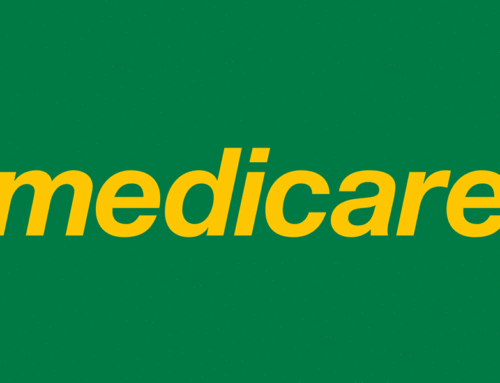“Written by Susan Reinhard and Susan Hassmiller.”
While the United States faces some unique challenges in the delivery of health care, it shares many others with countries around the world. An aging population creates demand for more health care services. More people of all ages are living with chronic diseases, with nearly half of Americans affected by diabetes, hypertension, arthritis, cardiovascular disease, and mental health conditions.
As AARP’s 2009 report on chronic conditions1 details, patients and their family caregivers experience firsthand the lack of care coordination among providers, often resulting in repeat tests and procedures, unnecessary rehospitalizations, and difficult transitions from hospitals to home. And the shortage of nurses and other health care professionals is already acute, particularly in rural and low-income areas. The shortages are expected to worsen as the current workforce retires and the demand for health care grows.
Addressing these challenges requires a transformation of the workforce. It is not just a matter of having more clinicians. We need health care professionals who are better prepared to care for people with multiple chronic conditions in all settings. And we need all of them to be able to deliver care to the fullest extent of their education and training. By virtue of their numbers as the largest health care profession, their scientific knowledge, and their adaptive capacity, nurses must help lead the changes in health care the population needs. To do so, nurses need to assume enhanced and reconceptualized roles in health coaching, chronic disease management, transitional care, prevention activities, and quality improvement.
These are some of the conclusions of the Institute of Medicine’s (IOM) report on The Future of Nursing: Leading Change, Advancing Health, released in October 2010. In partnership with the Robert Wood Johnson Foundation (RWJF), this nonpartisan report is the work of 18 experts in nursing, medicine, economics, business, hospital administration, health policy, consumer issues, workforce policy, and health plan administration. Based on evidence from an extensive review of the research, the report outlines a blueprint for transforming the nursing profession to enhance the quality and value of US health care in ways that meet the future needs of diverse populations. In launching the initiative, RWJF’s president, Dr. Risa Lavizzo-Mourey, noted that “nursing is at the heart of patient care” and is therefore crucial to changing the way health care is delivered so that “patients receive better care at a cost we can afford.” Echoing this sentiment, IOM President Dr. Harvey Fineberg noted that “Nurses are a linchpin for health reform and will be vital to implementing systemic changes in the delivery of care.”
One of the most viewed online reports in the IOM’s history, this landmark report calls on the nation’s leaders and stakeholders to act on its recommendations, including changes in public and institutional policies at the federal, state, and local levels. To spur this action, RWJF has partnered with AARP on the Future of Nursing: Campaign for Action. The campaign’s vision is for all Americans to have access to high-quality, patient- and family-centered care in a health care system where nurses contribute as essential partners in achieving success.
Coordinated through the Center to Champion Nursing in America at AARP, the campaign includes 36 state Action Coalitions (soon to be 45 or more states) and a wide range of health care providers, consumer advocates, policy makers, and the business, academic, and philanthropic communities at the local, state, and national levels. It is focused on three key pillars for change:
- Advancing Education Transformation
- Removing Barriers to Practice and Care
- Nursing Leadership
Interprofessional collaboration and diversity are threads woven through each pillar, with better workforce data forming the foundation of the work.
Advancing Education Transformation
The IOM report emphasizes that if nurses are to be as effective as possible in helping to provide high-quality patient- and family-centered care, they will need to be better prepared as care becomes more complex and moves into the community. We need more nurses with advanced degrees to provide primary care and teach the next generation of students. The report also recommends continuing education to help nurses retain clinical skills and develop leadership abilities. Studies2 support a significant association between educational level and patient outcomes, including mortality rates, in acute care settings.
Removing Barriers to Practice and Care
For both immediate and long-term needs, we must enable all registered professional nurses, as well as other health professionals, to practice to the full level of their education and training. In many cases, advanced practice registered nurses (APRNs), such as nurse practitioners and midwives, can be used to address the primary care shortage and free physicians to care for more complex cases requiring their expertise. A 2010 Organisation for Economic Co-operation and Development Health Working Paper3 reports that many countries are searching for ways to improve health care delivery by reviewing the roles of health care professionals, including nurses. The report concludes that developing new and more advanced roles for nurses could improve access to care and might also help contain costs.
The evidence overwhelmingly demonstrates equivalent patient outcomes when care is provided by an APRN or a physician. These studies include several systematic reviews4, a randomized, controlled clinical trial published in the Journal of the American Medical Association5, and an Office of Technology Assessment publication6. Yet, many states have outdated regulations and barriers that prevent nurses from practicing to the full extent of their education and training. For example, nurse practitioners in Arizona can see patients or
prescribe medicine without a physician’s supervision, while their counterparts in neighboring California and Nevada cannot.
Nursing Leadership
Nurses bring an important voice and point of view to management and policy discussions. We need to prepare more nurses to help lead improvements in health care quality, safety, access, and value. A recent survey of 1,000 hospitals in the United States by the American Hospital Association found that nurses account for only 6 percent of hospital board members. Physicians account for 20 percent of hospital board members, and other clinicians make up about 5 percent. Nurses need to see themselves as decision-makers and be able to influence health outcomes. The campaign is fostering appointments of well-prepared nurses to public policy and health care organization boards at the state and national levels. To better prepare themselves for these roles, nurses can find a helpful resource, Nurse Leaders in the Boardroom—The Skills You Need to Be Successful on a Board, at www.championnursing.org.
Leadership needs to happen at every level. One program that has been successful at engaging staff nursing is Transforming Care at the Bedside,7 which empowers floor nurses to suggest changes that they think will improve patient care. The changes are tested over a short period, and they are adopted if they prove beneficial. This program has improved patient outcomes, including reduction in falls with harm and 30-day hospital readmission rates.
Interprofessional Collaboration
Interprofessional collaboration stretches across all three campaign pillars. Studies have demonstrated how effective coordination and communication among health professionals can enhance the quality and safety of patient care. Health professionals working collaboratively as integrated teams draw on individual and collective skills and experience across disciplines. They seek input and respect the contributions of everyone involved. That allows each person to practice at a higher level. The result is inevitably better patient outcomes, including higher levels of patient satisfaction.
Data
The campaign seeks to improve health care workforce data collection to better assess and project workforce requirements. Research on the health care workforce is fragmented, and data should be able to reveal the supply of and demand for a combination of health care professionals in a region, instead of single professions.
Diversity
Finally, this campaign aims to diversify the health care workforce. Approximately 33 percent of the US population is part of a racial or ethnic minority group, yet only 18 percent of our nursing students are minorities. By 2050, African Americans, Asians, Latinos, and American Indians/Alaskan Natives will comprise a majority of our population. We need to make sure the nursing profession reflects the patients it serves, and that all nurses deliver culturally competent care.
From Report to Action
International interest in the future of nursing is evident. A few months before the IOM released its report, the United Kingdom released the Front Line Care: the Future of Nursing and Midwifery in England,8 prepared by Prime Minister Gordon Brown’s Commission on the Future of Nursing and Midwifery in England. Implementing the commission’s recommendations requires investment and commitment from diverse stakeholders. The US Future of Nursing: Campaign for Action is guided by an illustrious, nonpartisan strategic advisory committee. It includes diverse stakeholders and outreach to policy makers across party lines. It has formed locally-based Action Coalitions across the country to mobilize a broad-based effort to push for changes at the national, state, and regional levels. It includes a communications plan, grantmaking, and a research, monitoring, and evaluating strategy to generate additional evidence in support of the campaign objectives and ensure accountability by fully gauging our successes and shortcomings.
The Center to Champion Nursing in America is also charged with providing a wide array of technical assistance to ensure that the Action Coalitions are able to implement changes in education, practice, leadership, interprofessional education, diversity, and data. The center is helping Action Coalitions communicate with one another through an extranet—a place to share online discussion, documents, and resources; weekly campaign updates; training; on-the-ground expert consultation; and opportunities for peer-to-peer collaboration though learning collaboratives.
The Campaign for Action has made much progress over the past year. Many national organizations publicly support the report and its recommendations in meaningful ways. These organizations include Aetna, American Red Cross, Healthcare Information and Management Systems Society, National Association of Hispanic Nurses, National Association of Public Hospitals and Health Systems, National Medical Association, and the World Health Organization. The National Hispanic Medical Association is working with its members on an initiative to improve interdisciplinary education. RWJF, in collaboration with other funders, has launched a research initiative to identify, generate, synthesize, and share evidence essential to implementing the recommendations outlined in the report. This multifunder initiative is designed to increase and focus national attention on a common research agenda tied to the IOM recommendations and to facilitate and coordinate funding activity across a range of sources.
The United States has the chance to transform its system and culture of health care, but only if nurses are better prepared and able to practice and lead to the full extent of their education and training. Through national and local efforts, the Campaign for Action aims to utilize the skills and potential of nurses to effect sweeping change for a health care system that provides seamless, accessible, affordable, and equitable quality care for every American.






